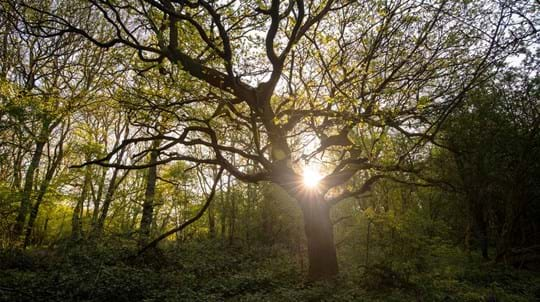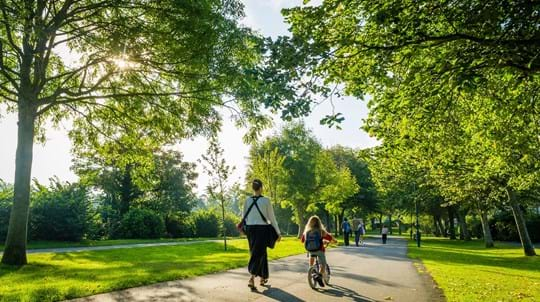Find a wood near you
We look after more than a thousand woods all over the UK. They're open and free for you to explore.
Visit a wood near you
Digital Content Manager
Wildlife refuges, carbon guzzlers, life support systems – our woods and forests are essential to the health of people and the planet. They both contain trees and they both support a range of flora, fauna and fungi, so how exactly is a forest different from the woods?
While the words 'wood' and 'forest' are often used interchangeably, there is a historic difference between the two. The original medieval meaning of the word 'forest' was similar to a preserve, where the land was kept specifically for the purposes of royal hunting. Woods often formed part of these forests, which were a mosaic of habitats including open grassland, farmland and heaths managed for large game animals such as wolves and deer. You’ll recognise many of these forests today, including:
Today, the term 'wood' is generally used to refer to an area much smaller than a forest. For example, Loch Arkaig Pine Forest in the Highlands of Scotland is more than 2,500 acres in size, while Skipton Castle Woods in Yorkshire is a mere 36 acres in comparison.
An urban forest is much like a traditional forest, with the term encompassing all the trees in an urban area. From old oak trees in local parks to rowan trees in gardens and silver birches lining city streets, they all make up the urban forest.
The benefits of urban forests are hugely important. Urban trees can reduce pollution and improve air quality in built up areas, keep cities cool and improve the mental health of people who often don’t have any outdoor space at home. Urban forests are also crucial for wildlife, offering food and shelter to a range of birds, insects and mammals which themselves enrich the lives of the people who live and work amongst them.
However, not everyone has equal access to urban trees, so we’re working hard to reduce this inequality and improve tree equity in towns and cities across the UK.
Woods and forests are important for the survival of wildlife, people, and the environment as a whole. They are our lungs, our guardians, our health service and wildlife champions. Some of them, like ancient woodlands and temperate rainforests, are irreplaceable, having evolved their unique habitats and wild inhabitants over millennia. Once we lose them to development, pests and diseases or climate change, we can’t get them back.
We look after more than a thousand woods all over the UK. They're open and free for you to explore.
Visit a wood near you
Trees woods and wildlife
Trees combat climate change, nurture biodiversity and enhance our wellbeing. Discover why increasing the UK's tree cover is crucial for a thriving, sustainable future.

Trees woods and wildlife
Woodland is home to a wealth of wildlife. If we don't protect what we have left and plant trees for the future, we'll lose more than just trees.

Trees woods and wildlife
Trees are one of the best natural climate change solutions. Find out how they lock up carbon and how many the UK needs to reach carbon net zero by 2050.

Blog
Chris Britt-Searle • 28 Jun 2024